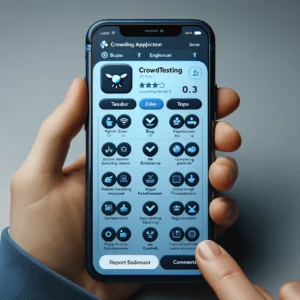Bugfender
Bugfender is a remote logging tool that helps you track down bugs in your mobile apps.
It works by sending logs from your devices to the Bugfender servers.
You can then use the web-based console to search and filter the logs.
Bugfender is especially useful for tracking down bugs that only occur on certain devices or in certain conditions. It’s also great for seeing how users are interacting with your app.
Crowdtesting with Bugfender is an effective way to collect feedback about bugs and crashes in mobile apps.
By using Bugfender, developers can improve the quality of their apps before they are released to the public.
TestFairy
TestFairy is another mobile app testing tool.
It works by recording a video of each test session.
This is useful for seeing exactly what a user does when they encounter a bug. TestFairy also provides a range of other features, such as crash reporting, performance monitoring, and beta distribution.
TestFairy can assist in getting deeper insights when crowd testing.
When added, as crowd testers use your app, you will be able to see their actions in the TestFairy dashboard.
You can also see how long they spend on each screen, and what devices they are using.
Appium
Appium is an open-source tool for automating mobile app testing.
It can be used for iOS and Android apps.
Appium allows you to write tests in a wide range of programming languages, including Java, Ruby, and Python.
Robotium
Robotium is another open-source tool for automating Android app testing.
It’s easy to use and doesn’t require any programming knowledge.
Robotium can be used to create both functional and regression tests.
Calabash
Calabash is an open-source tool for automating mobile app testing on iOS and Android.
It uses cucumber to write tests in a natural language.
Calabash also supports a wide range of devices and can be used to create both functional and regression tests.
Ranorex
Ranorex is a commercial tool for automating web and desktop application testing. It supports a wide range of technologies, including .NET, Java, Delphi, and SAP. Ranorex can be used to create both functional and regression tests.
SoapUI
SoapUI is a tool for testing web services. It can be used to test SOAP and RESTful web services. SoapUI also supports a wide range of other technologies, such as JMS, JDBC, and Amazon S3.
JMeter
JMeter is a tool for load testing and performance testing.
It can be used to test web applications, databases, and web services. JMeter also supports a wide range of other technologies, such as LDAP, SMTP, and POP3.
Selenium
Selenium is a tool for automating web application testing.
It can be used to test web applications on a wide range of browsers, including Firefox, Chrome, and IE. Selenium can also be used to create both functional and regression tests.
Watir
Watir is an open-source tool for automating web application testing.
It can be used to test web applications on a wide range of browsers, including Firefox, Chrome, and IE.
Watir can also be used to create both functional and regression tests.





